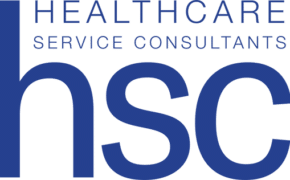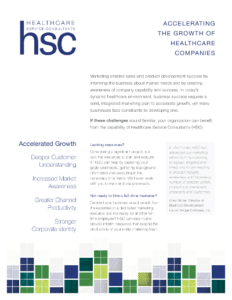
Top 3 considerations when commercializing a healthcare product subject to 510k clearance
If you’re commercializing a medical device requiring 510k clearance, you know how tricky and time consuming it can be. Many healthcare IT entrepreneurs focus most of their time, energy, and resources into securing that regulatory “stamp.” They don’t invest in commercialization activities like sales, marketing, and demand generation until clearance. This is a mistake!
Yes, you do need to be careful about the claims you make to the broader market for a pre-clearance device. Still, it is important to develop your marketing program in parallel to the 510K submission process. Then, when you get clearance, you will have the necessary plans and programs in place to:
- build market awareness
- generate leads
- secure paying customers more quickly
In our previous blog, we provided a commercialization checklist. This piece discussed the importance of leveraging pilot sites to inform messaging and generate early market interest. In this blog, we’ll dig more into these topics and explore the nuances related to the marketing of 510k regulated products.
Strategic Importance of Early Site Selection
A key need for obtaining 510k clearance is demonstrating your product is safe and effective according to its intended use. This involves a clinical trial or validation activity at one or more sites. There are two main types of sites to leverage at this phase:
- Clinical validation sites. These sites gather scientific evidence that your medical device is safe and effective.
- Pilot sites. These sites might also prove safety and efficacy. Yet, they’re intended to prove the feasibility, usability, and value that your device delivers.
Too often, early sites are chosen based on their ability to generate scientific evidence; not on their ability to show commercial value. To get the most out of your clinical validation efforts, and to pave the way for commercial success, it is important that clinical validation sites are also reflective of your initial commercial target audience. This includes academic hospitals versus smaller independent clinics that would have differing tolerances, workflows, etc.
The answer? Involving an experienced product marketing expert in early site selection and clinical validation design. This can help to ensure representation among appropriate workflow areas, stakeholders, and clinical subspecialties. It can also ensure gathering of well-rounded feedback. Doing so will support your regulatory pathway. It will also result in compelling market messaging and evidence for sales enablement and commercialization.
Tackle Regulatory and Marketing in Parallel
Marketing messaging can sometimes be optimistic and use flowery language to attract customer attention and promote your product. With a 510k, you need to be careful. The claims you make in your marketing messaging must align with the claims you are making in your 510k submission. This means you need to determine your messaging well in advance of completing the submission process.
Your product marketers should work closely with an experienced quality and regulatory expert throughout the submission process. Doing so ensures marketing messaging won’t run afoul of the FDA. Often, smaller companies don’t have quality and regulatory people on the roster. If this is the case for you, consider engaging a regulatory consultant to help.
Another reason to start developing your messaging early is that it often takes multiple review and approval cycles to get the messaging right. A good time to tackle this is during the downtime between submission and FDA approval, when claims are well understood. This is also a good time to onboard your sales team. They can work to establish relationships and build in-roads with early pilot sites or customers while you wait.
Even without clearance you can still do some early promotions around the problems you solve. The goal is to build awareness and garner early interest across your target audience without making explicit, risky claims about the capability of your specific product.
Avoid Being a Victim of Your Own Success
Some lucky entrepreneurs find themselves in a situation where many sites come forward, offering to serve as pilot sites for promising new solutions. This seems like a great problem to have. But, it can lead to some dangerous pitfalls that can have an adverse impact on your regulatory and commercialization timelines.
- Taking on too many pilots. It’s easy to say yes when a site is asking to trial your innovation. Before doing so, consider if the site meets the strategic and commercial needs of your organization. Or, if it is self-serving to the site alone. If you take on too many sites, you risk spreading your team too thin and may not be able to achieve success with any one pilot.
- Pilot-itis. This is a tongue-in-cheek term for the tendency for organizations to launch small pilot projects but are unable to scale to a full implementation. You can avoid it by ensuring product-persona-workflow fit. Setting clear timelines and milestones for pilot projects will increase the likelihood that early sites will want to continue realizing the benefits of your product. It will also convert to paying customers when the pilot is finished.
- Making marketing an afterthought. When a pilot project is going well, it is an excellent opportunity to create thought leadership content. Such content educates the market on the problems your products solve, and benefits realized by actual customers. Yet, many entrepreneurs find disappointment in realizing healthcare organizations will resist participating or allowing their name in such publications when asked mid-project. Set yourself up for marketing success early by including clauses in your pilot contracts that require sites to provide referenceable evidence like statistics or testimonials for your articles, case studies, white papers, etc.
Successfully Align Your Regulatory and Commercialization Efforts
Commercializing a product that requires 510k clearance requires a carefully and strategically planned approach to marketing as well as the regulatory process. To accelerate commercialization and maximize your chances of success, it’s essential that you execute activities in tandem, guided by product marketing and regulator experts.
Are you bringing a new 510k product to market? Our healthcare IT product marketing experts have designed successful commercialization strategies and marketing programs for a variety of healthcare IT companies. Contact us to learn how we can help your organization.




